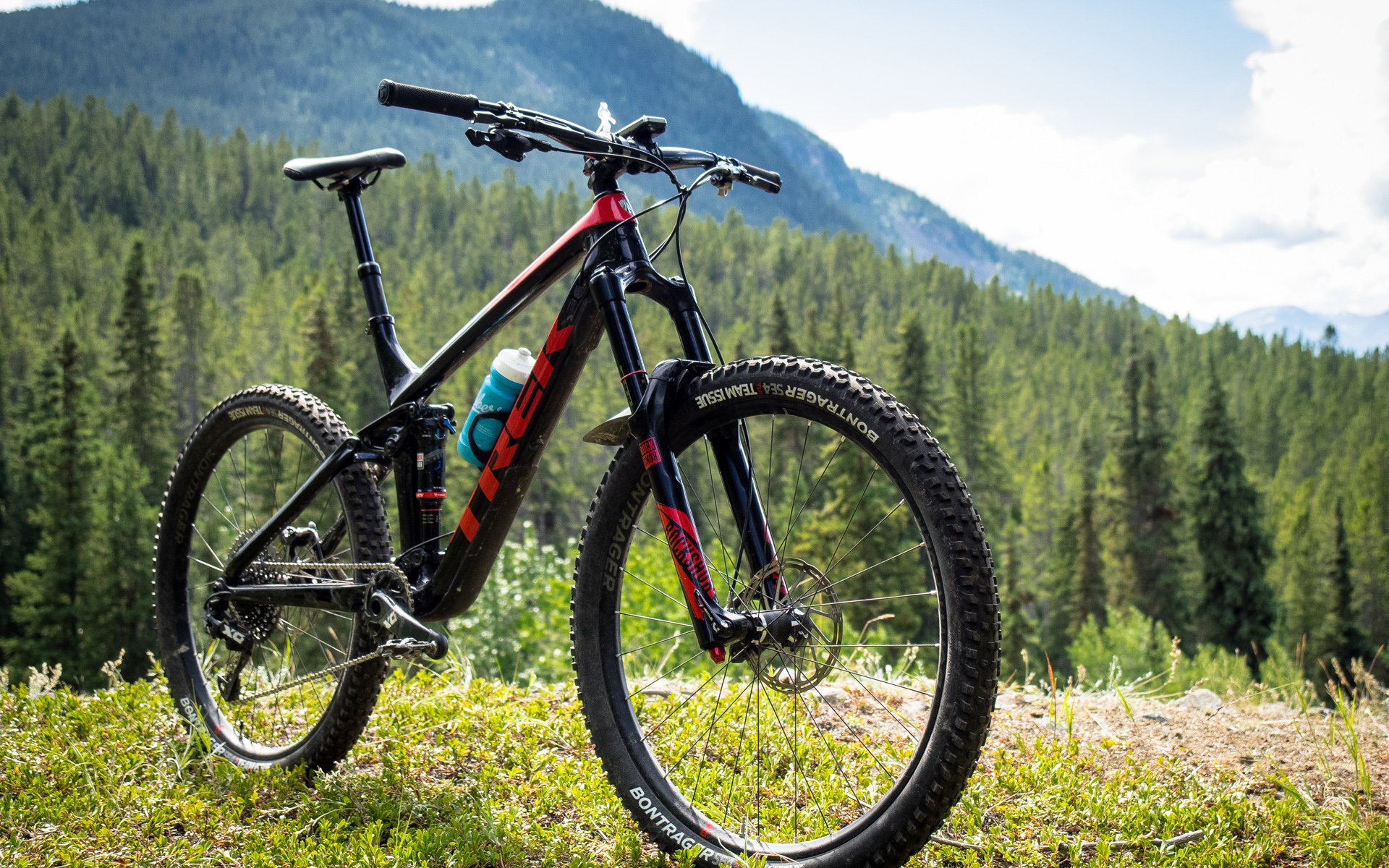
LONG TERM REVIEW
2017 Trek Remedy 9.9 RSL
Trek went deep for 2017 and launched all new models of their Fuel EX, Remedy, and Slash platforms. At their launch event last year in Squamish we were introduced to and rode the first two, but only got a sneak peek of the Slash as its announcement followed about a month later. Go here for a full run down on spec, geo, pricing, and my early ride impressions of the Fuel EX and Remedy, and you can read Perry's Slash review here. The reason I'm starting this Remedy review with all of that info is because Trek didn't just release new versions of those bikes, they also changed the way the lineup looked:
- All three bikes got the longer, lower, slacker treatment.
- Fuel EX got a travel bump to 130mm and became a 29er only platform (as well as 27+).
- Remedy also got a travel bump up to 150mm and became a 27.5 only platform.
- Slash went down from 160mm to 150mm and became a 29er only platform.
And back then, I went 'huh'. So Fuel EX is the trail bike that showed incredible capability on Squamish's TechC and AM trails and works for the rider who wants something that emphasizes pedaling but will still keep rubber underneath them in the steep and adverse. Remedy predictably slayed the same trails, and Slash is positioned as an Enduro race bike or a mob everything trail/AM bike. It's still weird to me that the Remedy is the only bike in the lineup with 27.5 wheels and everything else is a 29er (even their Session, soon, since Athertons on Session 29er spy pics are turning up), however, remember that Remedy and Slash now have the same amount of travel (just different wheel sizes). Here's a weird one: Trek has a 26" Session, too, so is it possible that Trek's DH/Freeride bike may soon be the only bike on the market available in 3 wheel sizes now that the Specialized Enduro is 27/29 only? Probably not for long - maybe 26 will stay and the Session 27.5 will die but at this point, I'm just tangenting hard, so let's leave it for now.
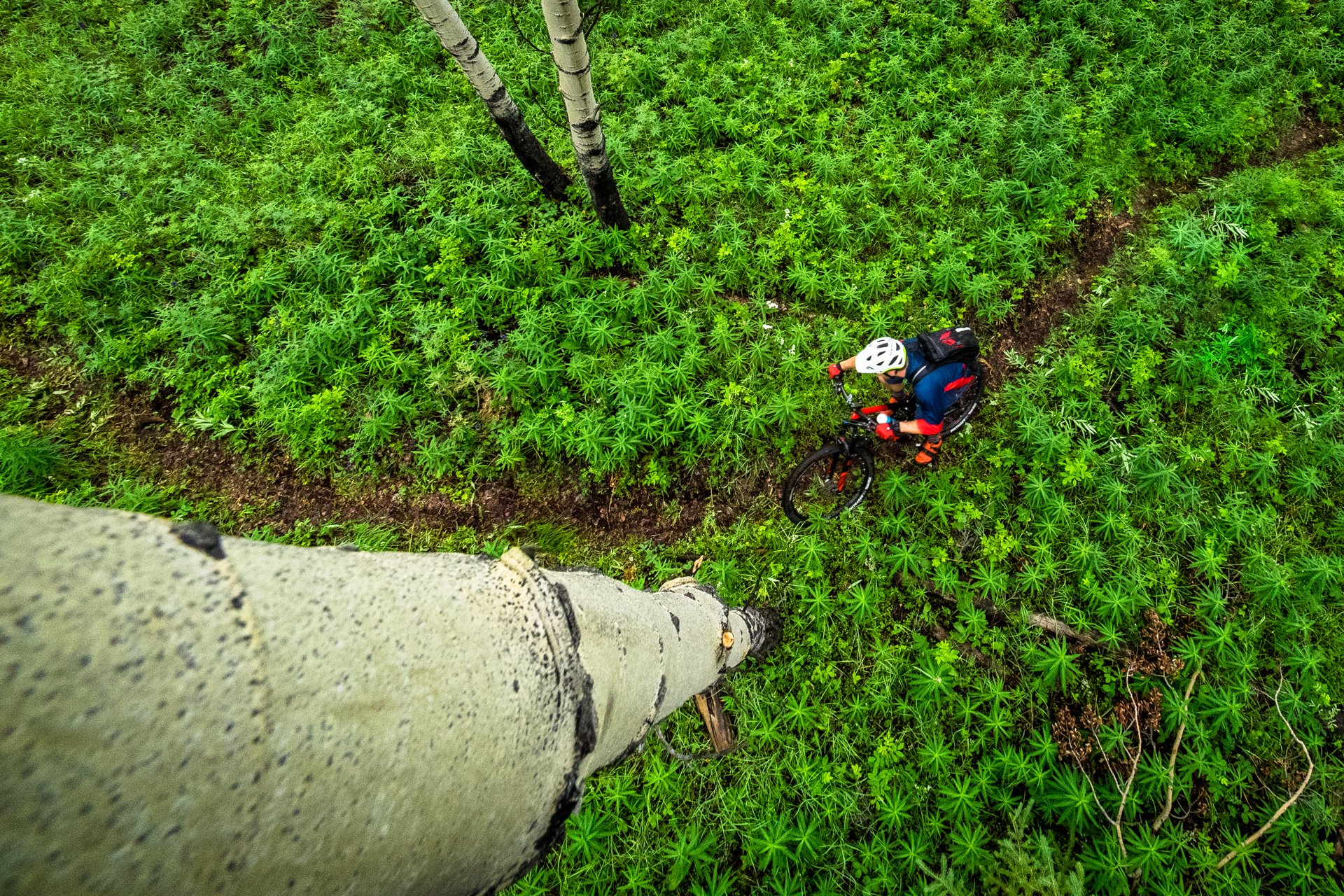
Trek's reasoning for the changes to their lineup was to make things simpler. Gone are wheel size choices (other than Fuel EX becoming a 29er/27+ option). Remedy and Slash both have 150mm rear wheel travel - choose depending on whether you want playful 27.5-inch wheels or run-it-all-down 29er, whether you plan to race or just like it big.
In the launch article which doubles as a first look, you can get a full run down on spec, geo, pricing, etc. But for the sake of the review, here are some of the main points:
- Full carbon frame
- 27.5-inch wheels only - no 29er or 27+ option
- 150mm (5.9") rear wheel travel / 160mm (6.3") fork travel (our tester came with a Dual Position Lyrik, adding a 130mm option)
- Full Floater rear suspension system with ABP (Active Braking Pivot)
- Rock Shox Deluxe RT3 RE:aktiv 3-position rear shock (Metric-sized 230 x 57.5mm)
- Mino Link for adjustable geometry (Hi / Lo - HTA 66º / 65.5º // BB 34.3 / 33.9cm // Effective Seat Tube 74.1º / 73.5º
- Boost 148mm rear spacing, 12mm through axle
- Press Fit 92 BB shell & ISCG05 mount
- Straight Shot downtube with Knock Block steerer stop system to prevent downtube damage
- Internal cable routing
- $7,999 US / $10,599 CAD for the top spec Remedy 9.9 RSL we tested
First look article - https://nsmb.com/articles/2017-trek-remedy-launch-first-ride/

2017 Trek Remedy Geometry.
The Remedy made a good impression on me at the launch camp. It was simple to set up and get used to, easily handled a variety of terrain on a long day with lots of climbing, and was a lot of fun in every situation. I didn't even need to trot out the tired but true "we'll have to see how it performs on our trails back home" because Squamish is home (or close enough). Look, it's a great bike. That isn't really the question. The question, if you're reading this and contemplating a purchase, is whether the Remedy is your kind of great bike. Let's break down some salient points.
Full Carbon Frame / Trek OCLV
It all works in cycles. Steel bike frames presented lots of criteria for judgment: tubing, weld style and quality, paint, dropout caliber, etc. Ditto alloy. And for a while, also carbon. But it feels like lately the amount of design and engineering that goes into a quality carbon frame is not as noticed. Part of that is likely because the quality of carbon frames out there as a whole has increased. Part of it is because the quality of a carbon fiber frame is contained inside - you can't evaluate it from the outside. Part of it is because in the past, an up-spec'd rear derailleur was a useful way to deflect attention away from other deficiencies, and those kinds of tricks still exist. The 2017 Remedy 9.9 RSL (Race Shop Limited) is $8,000 American greenbacks and detractors would point out that that includes a lot of Bontrager house brand components and the wheels aren't even carbon. I'ma break this down for you.
- The Remedy is a full carbon frame. Not carbon-front-carbon-seatstay-alloy-chainstay. Full freakin' carbon. That requires mega-engineering and design, more cost, and skill to build if a company wants to not lose their chamois on a frame designed to be ridden real hard erryday. There was a time when you could look at a cutaway Trek frame and it wasn't top tier. Those times are over.
- Bontrager may be a house brand, but that's no reason to hold it in lower regard. I'll break down the spec a bit more lower down, but generally speaking, something with the Bontrager 'B' on it represents great performance and value (and that may not even be going far enough). It may not make the person on the next barstool at the post-ride drinking hole swoon, but if you're relying on your handlebar logo to get yourself laid, it's clear you can't pop a roadhouse wheelie. Reload.
- The carbon wheel complaint is legit, but I'm willing to bet that the 2018 Remedy 9.9 RSL will come with carbon Bontrager wheels, since they just announced a set that will retail for $1,200 US.
- Straight Shot downtube and Knock Block. People like to diss it because it's new and different, but you'll never notice the stem blocked out on either side while riding (tight switchbacks included), unless you like a front end so stiff that you can do stupid things halfway down a steep chute and easily recover on the downstroke (thanks also in part to the Lyrik).
- Full Floater, ABP, and Re:aktiv shocks. I'm just mentioning these now to emphasize Trek's commitment to proprietary technology. Many companies have acronyms and fancy names, but few go to the lengths that Trek does to research and develop innovations that make an actual difference to their bikes.
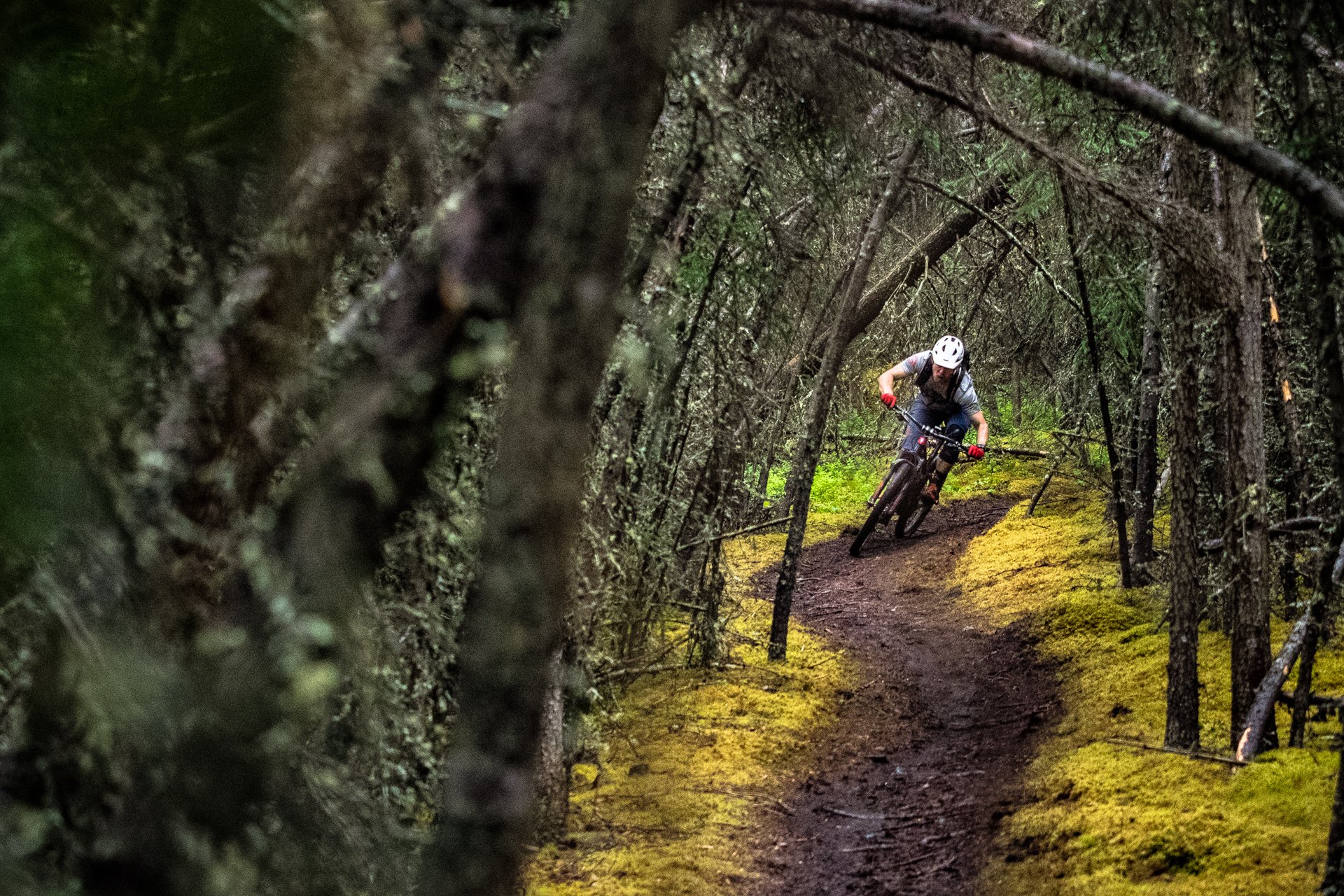
The Remedy came with me to the Yukon last summer. We rode everything from the freshest loam to rock slabs and alpine meadows. Shuttles and long pedals. There isn't anywhere I've traveled in the last five years where the Remedy would not have been absolutely perfect. Six years ago we didn't have anything even close to this good, so mind/memory explodes when trying to draw comparisons.
All that said, a carbon Remedy frame only is still north of $4,000 CAD and that's plainly insane. I can't imagine anyone buying one unless they're literally awash in hard currency or their inept kid just opened a bike shop and has one on the shelf, waiting to be taken home. That frame, however, is chock full of tech and performance. It's just not easy to swallow that price when a really really good competitor's frame can be had for about fifty twenties less.
Spec Highlights
SRAM Eagle XO1. There was so much hype. All of it is true. The 500% gear range is revelatory, the shift quality is superb, it just keeps working in mud and snow and rain and dust. And it's durable. Good thing because replacement parts are expensive, but if your concern is performance above all else, they really nailed it. And in year one on the market, it was clearly an expensive OE spec choice reserved for top spec bikes only. Trickle down and year two on the market will lead to better pricing. Again, if you can wait, 2018 will be a bit gentler on your coin purse (Canadian and British exchange rates notwithstanding).
Rock Shox Lyrik. 2017 Remedy models with the RSL moniker come with 160mm travel up front instead of 150. On the 9.9 RSL, that means the Lyrik RCT3 Dual Position Air. I'm not unique in that I'm a big Pike fan. Lyrik is even better. Stiffer and more capable when it's really rough and nasty, and when it's not....meh, who cares, we're talking about a bike made for rough and nasty. For more on the Lyrik, here's a great review from Tim Coleman. Run with one spacer, it was too linear for my taste on really steep trails with heavy g-outs at the bottom of consequential sections, but it did work like that with 80 lbs of air in flowier trail sections. Two spacers and about 75 lbs was pretty much a bull's eye for technical trail involving a mix of steeps and medium/high speeds.
Rock Shox Deluxe RT3 RE:aktiv 3-position rear shock. This is at the heart of the Remedy's suspension system along with Trek's Full Floater and ABP technology. Designed to respond to shaft velocity, Re:aktiv was co-developed with Fox and Penske. The idea is that its performance isn't affected by low-grade inputs like pedaling, but as soon as a high-speed hit is encountered, it springs to life. In practice, it feels like your shock pedals like it's in trail or lockout mode but as soon as you hit rough stuff, it gets plusher and behaves like you expect it to in open mode. Now, there are plusher designs out there, and in that sense the Remedy and Re:aktiv feels like a race-tuned platform, however there's no denying that although you can still make use of the shock's three positions (and I did), if you leave it open, it still pedals incredibly well for open mode, and then grabs a fistful of steak knife and digs in once you point it down or hit a bunch of stutter bumps. I bottomed it hard once, but it wasn't a harsh feeling. Whereas I bottomed the Lyrik regularly until I added a token.
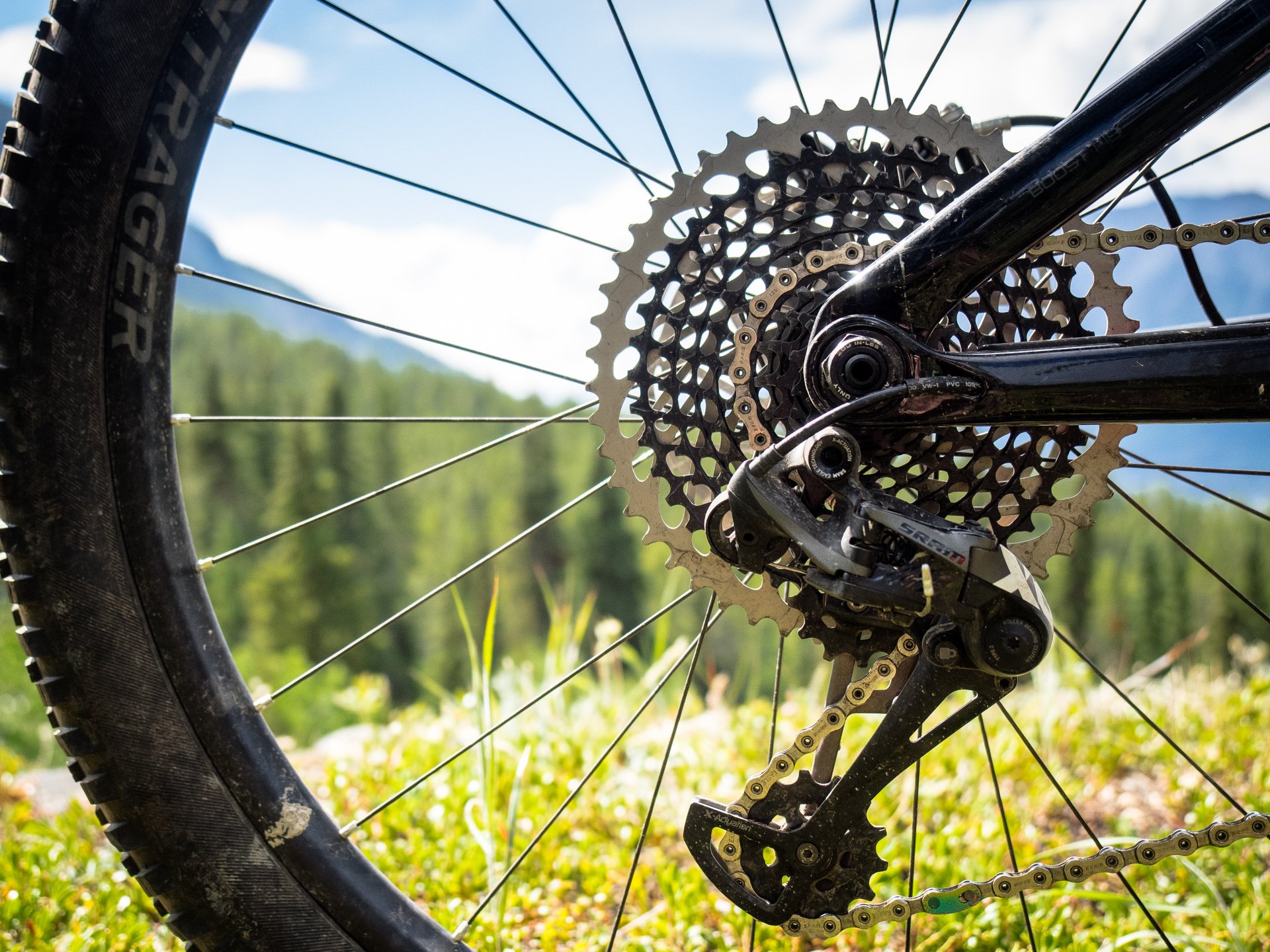
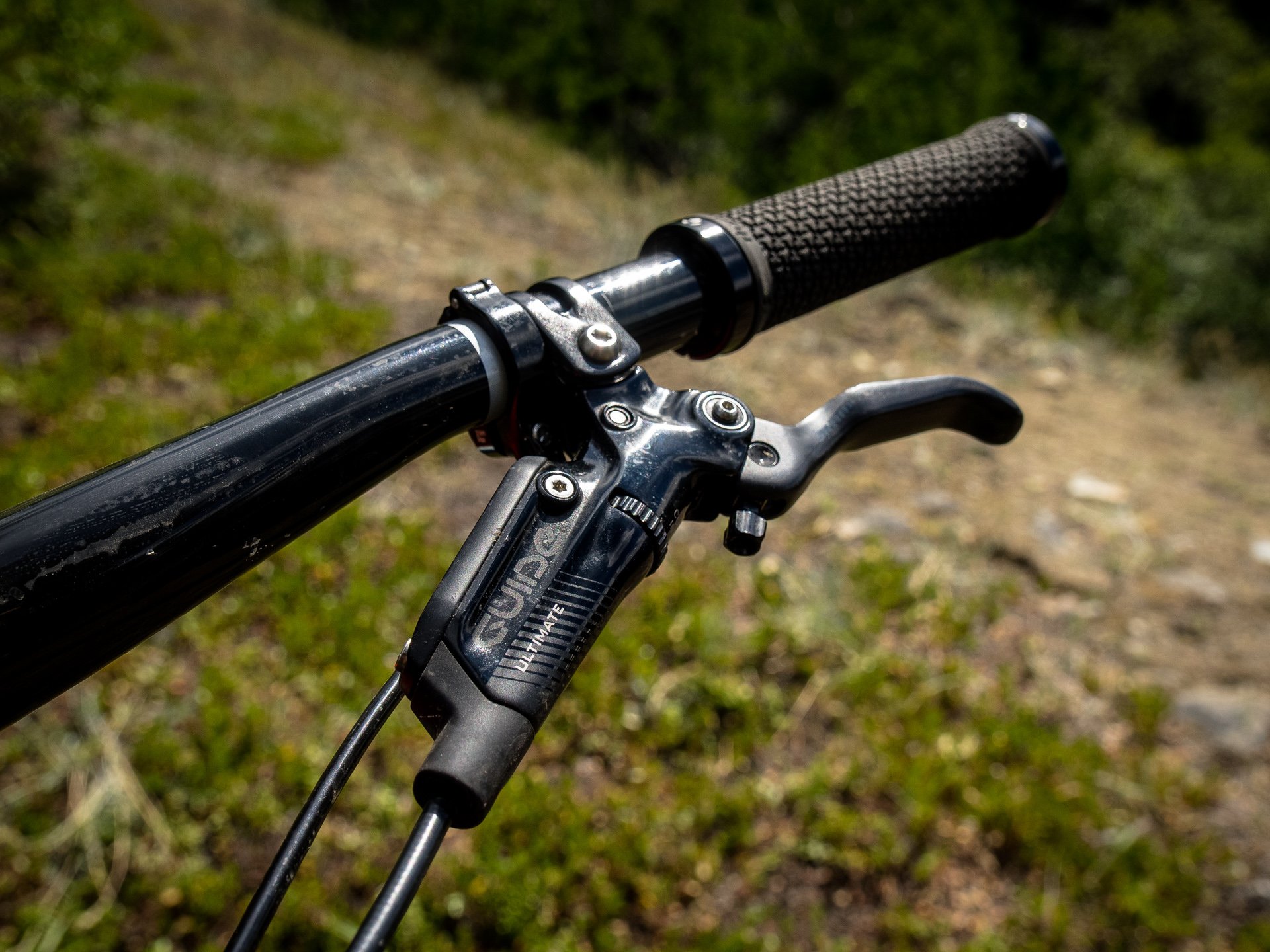
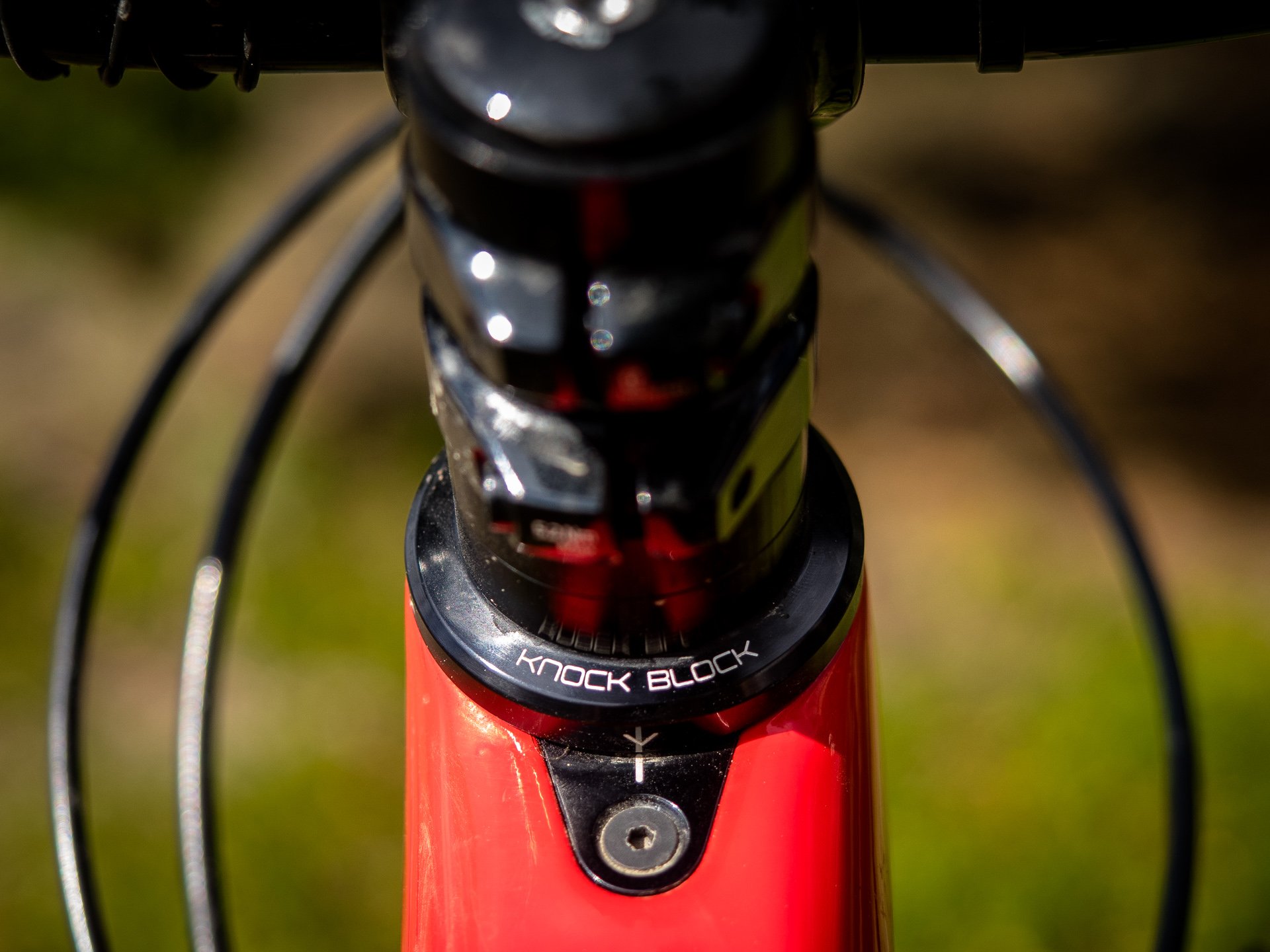
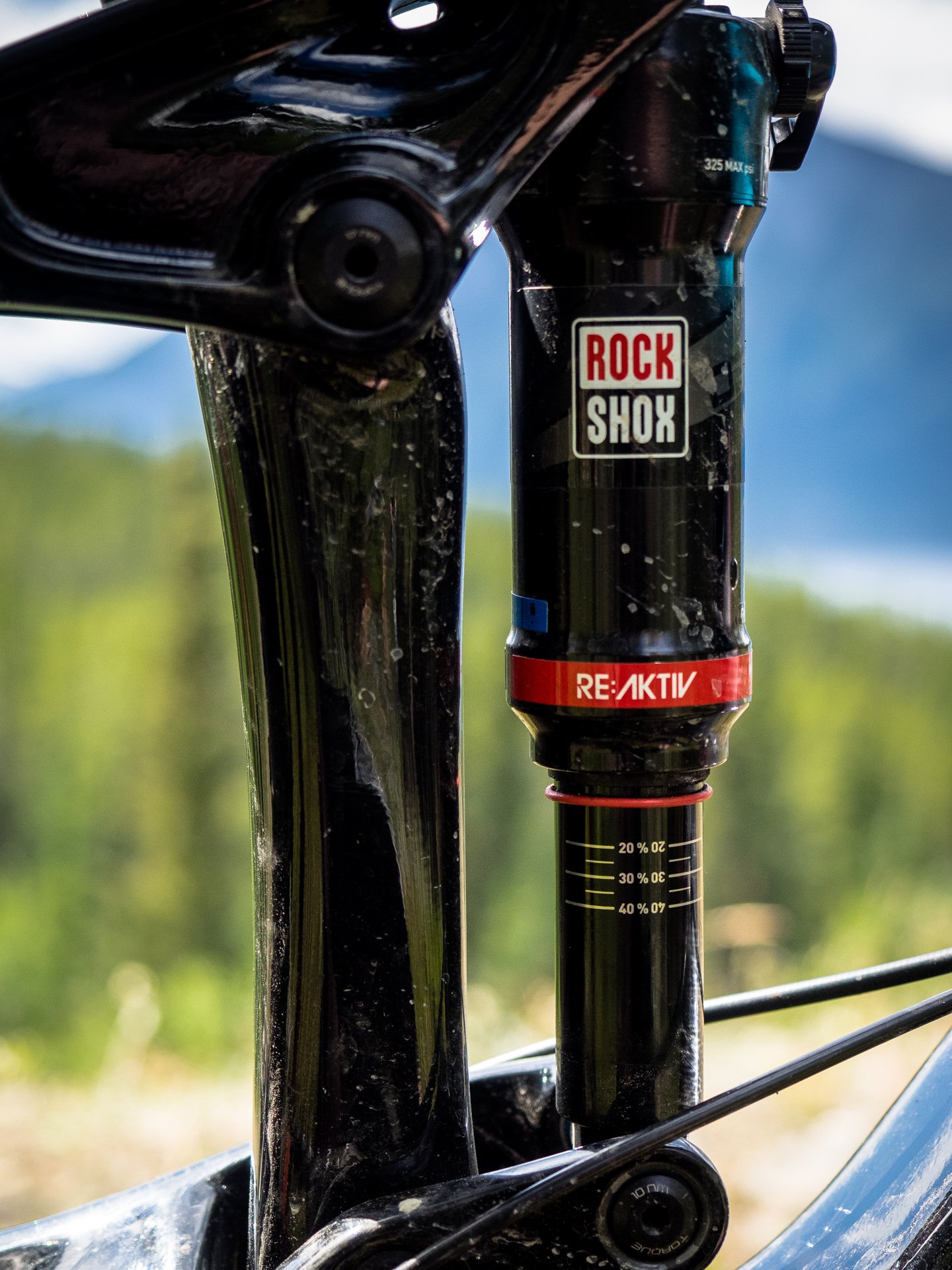
Bontrager Componentry
Other than Rock Shox/SRAM, pretty much everything else was handled by Bontrager. Interestingly, I encountered very mixed reviews about this situation when discussing the bike's spec with others. Some people - usually those with experience with Bontrager stuff - felt it was a mostly positive decision on Trek's part. Others thought it was indicative of Trek trying to increase margins with inferior stuff but usually didn't have a past Bontrager experience to point to to back it up. Chalk that up to brand cachet - Bonty may not have it in spades, but I didn't feel like the parts draped on the 9.9 were a compromise at all.
Tires. The Remedy comes stock with Bontrager's new SE4 Team Issue tire in a 2.4 width with a Core Strength sidewall (sidewall and subtread protection) , 120tpi and aramid bead. The tread pattern is fairly aggressive, but it rolls well, climbs competently, and corners very predictably. The transition from center to side knob happens smoothly and without complaint. Braking traction is good if a fraction lighter than Minion-esque. Directional control was consistently better than I expected if I spent too long looking at the knobs. These tires are the buddy that does everything well, doesn't brag about it, and buys a round when it's his turn. Which is to say, just about impossible to find. At less than $100 CAD, I'll also give them the Value merit badge because they lasted a long time and I never flatted. Yup, if I were buying tires, SE4 would be a top 2 choice. If they were more than $10 less than a Minion, it would be the top choice.
I requested a set of the SE5 tires once the SE4s wore out, because I thought their slightly more aggressive nature would suit our wet winter conditions. While their knob depth is a bit deeper and you can feel the extra bite, I don't find they climb as well and the transition from center to side is a bit more tenuous since the spacing is a little larger. I certainly don't dislike them - they're terrific - but for me the SE4 is the better all-rounder and the perfect combo might just be SE5 up front and SE4 on the rear.
Bontrager Drop Line 125mm Seatpost. This was another introduction from Bontrager for 2017. It is a cable-actuated, air sprung hydraulic locking cartridge-style post with unlimited travel range.
- Good stuff: the lever is pretty ergonomic and has a moderately light action. It's not class-leading, but it works. Keyed chassis effectively prevents rotation. 2-bolt head is easy to set up and adjust. Cable can easily be detached allowing you to transfer the post between bikes. MSRP is a very reasonable $379 CAD, warranty two years, cartridge changes take a couple of minutes. Which is good, because you'll be changing cartridges...
- Bad stuff: Initially released at 125mm only - and that's the length that came on our size 19.5 tester. That is too short for a size Large test bike - by a lot, actually. When it gets steep, there is a lot of post showing, and it can be a problem for me, even with my less than average 32" inseam (I'm 6'1). There is now a 150mm version available. Another big issue is that my post failed after about 3 months of use. The good news here is that a shop can swap in a new cartridge quickly and everyone should have them in stock. Even after your warranty period ends, they only cost about $25. However, cartridge number 2 is now failing - that's not great for less than a year of riding (and I didn't ride the Remedy much during #snowmageddon). Bontrager is sending us a 150mm post but the bigger news is that they've increased the number of seals from one to two - I'll report back on how well the revised design lasts compared to the first one.
Bontrager Line Pro Bar and Stem. Trek engineered their 35mm stuff to have the same feel/flex pattern as the 31.8 version. The carbon bar is plenty stiff but not harsh, and although I'm happy with 800mm wide, I haven't minded 780 one bit.
Evoke 3 saddle with Ti rails. Months had gone by when I realized that not only was it a great perch, but I wasn't experiencing numbness or discomfort and it never did a single thing to annoy me - except look really plain. But seriously, it's just a good saddle that is holding up well to abuse, has Ti rails so it's light, and has a nice amount of flex and support. This saddle is the epitome of Bontrager: no nonsense, maybe even plain, but really well designed and made by multiple someones who really know their shit.
Bontrager Line Elite 30 Wheelset. This is a 28mm internal width alloy rim with a 54 tooth Rapid Drive hub (with 108 engagement points). They have a nice compliance that is noticeable every time I come back to them after riding other wheels - especially the Enve M70s on our Nomad - but have uttered no complaints and have held true with only a minor wobble that was easily straightened and never appeared again. They are solid and precise - nicely complementing the stiff front end and fork - and are fine looking to boot. Their only sin, if there is one, is that they're not carbon, and at this price point, that's a reasonable question to be asking.
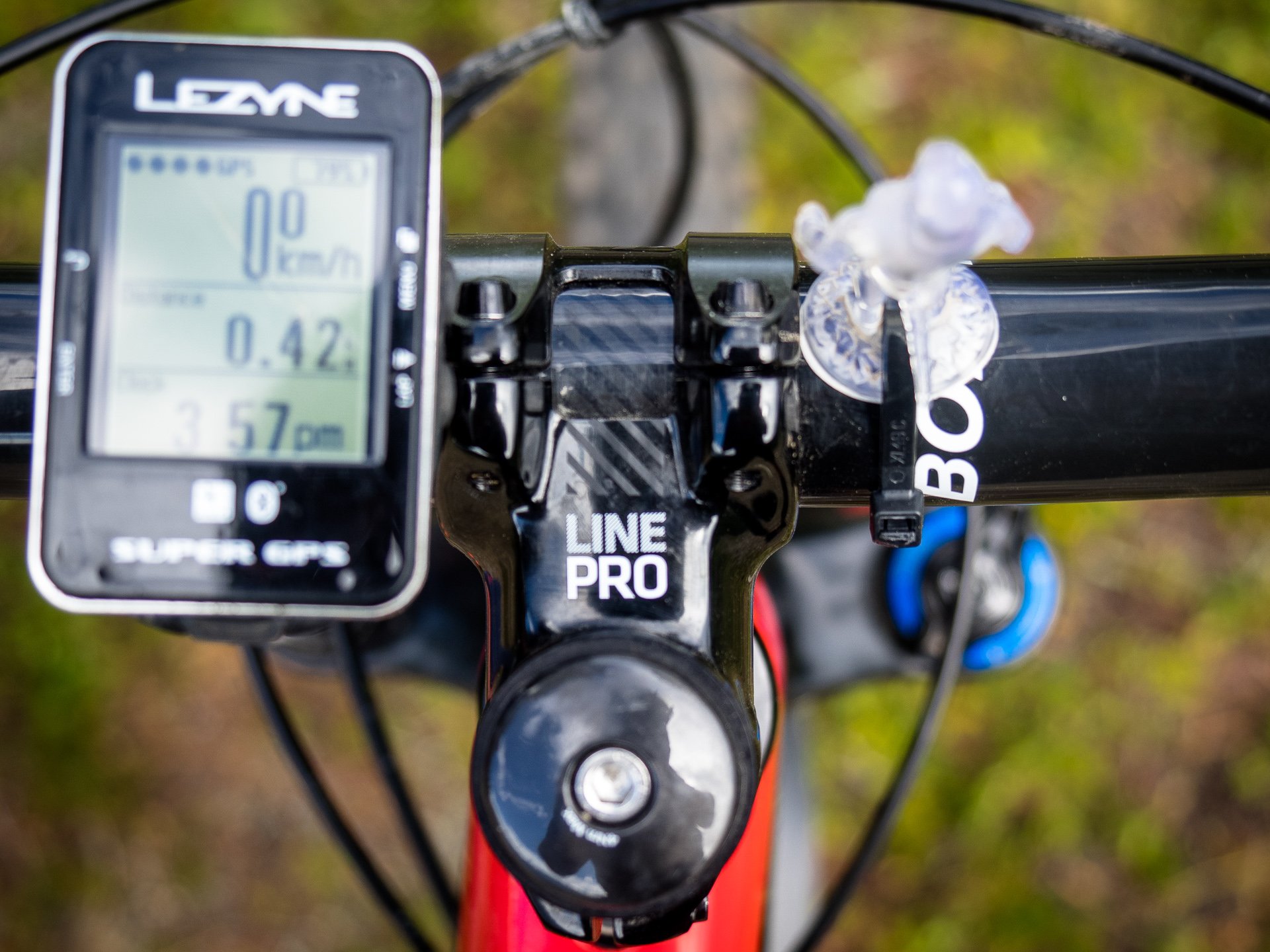
The Line Pro cockpit isn't truly bling, but it has the right shapes and the bar feels great. Make it an 800 and it'd be even better.
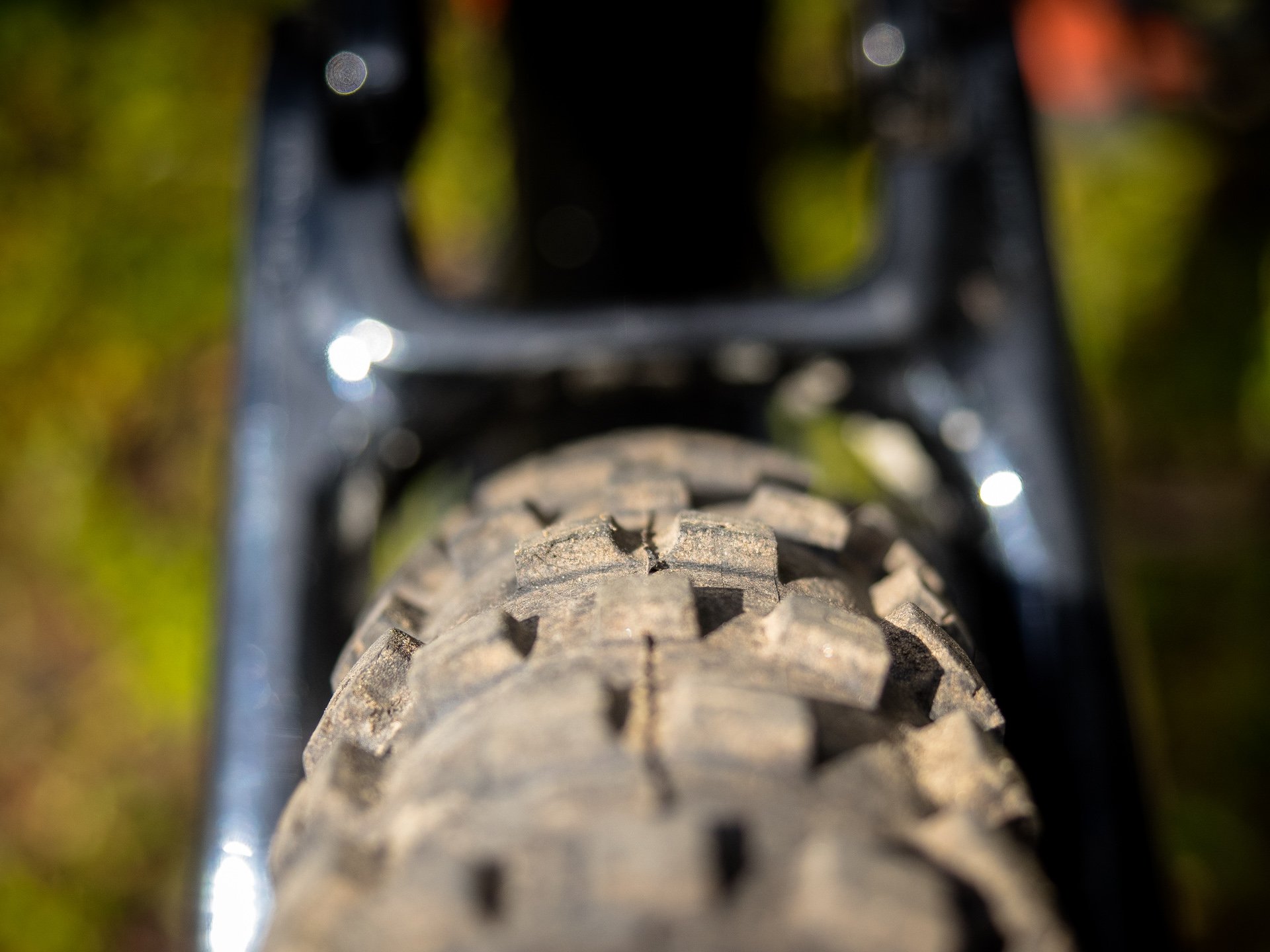
The SE4 Team Issue tires were superb.
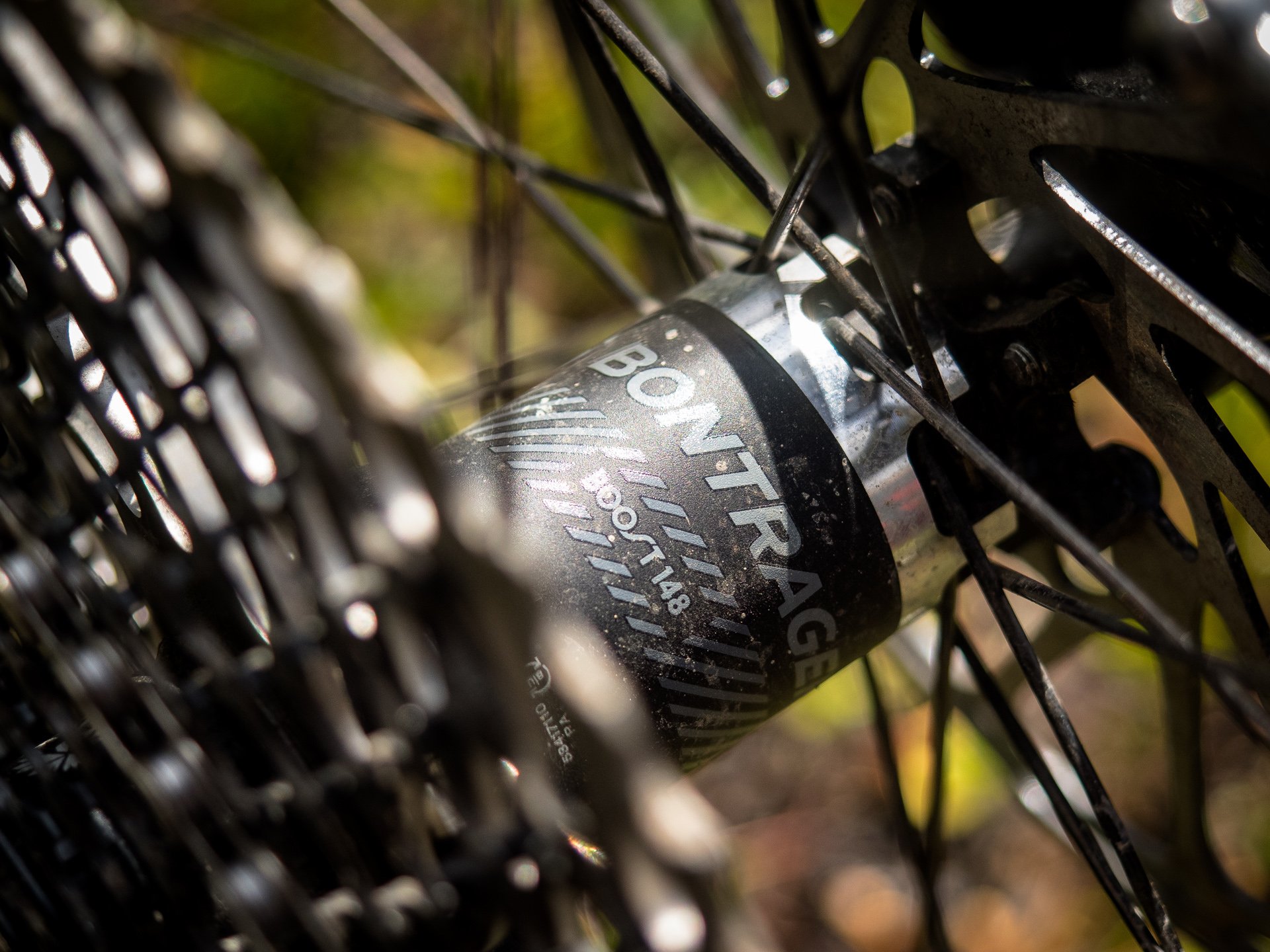
Bontrager Line Elite 30 wheels. Their only sin is that they're not carbon. Otherwise, they are a good looking wheelset that have performed and held up perfectly.
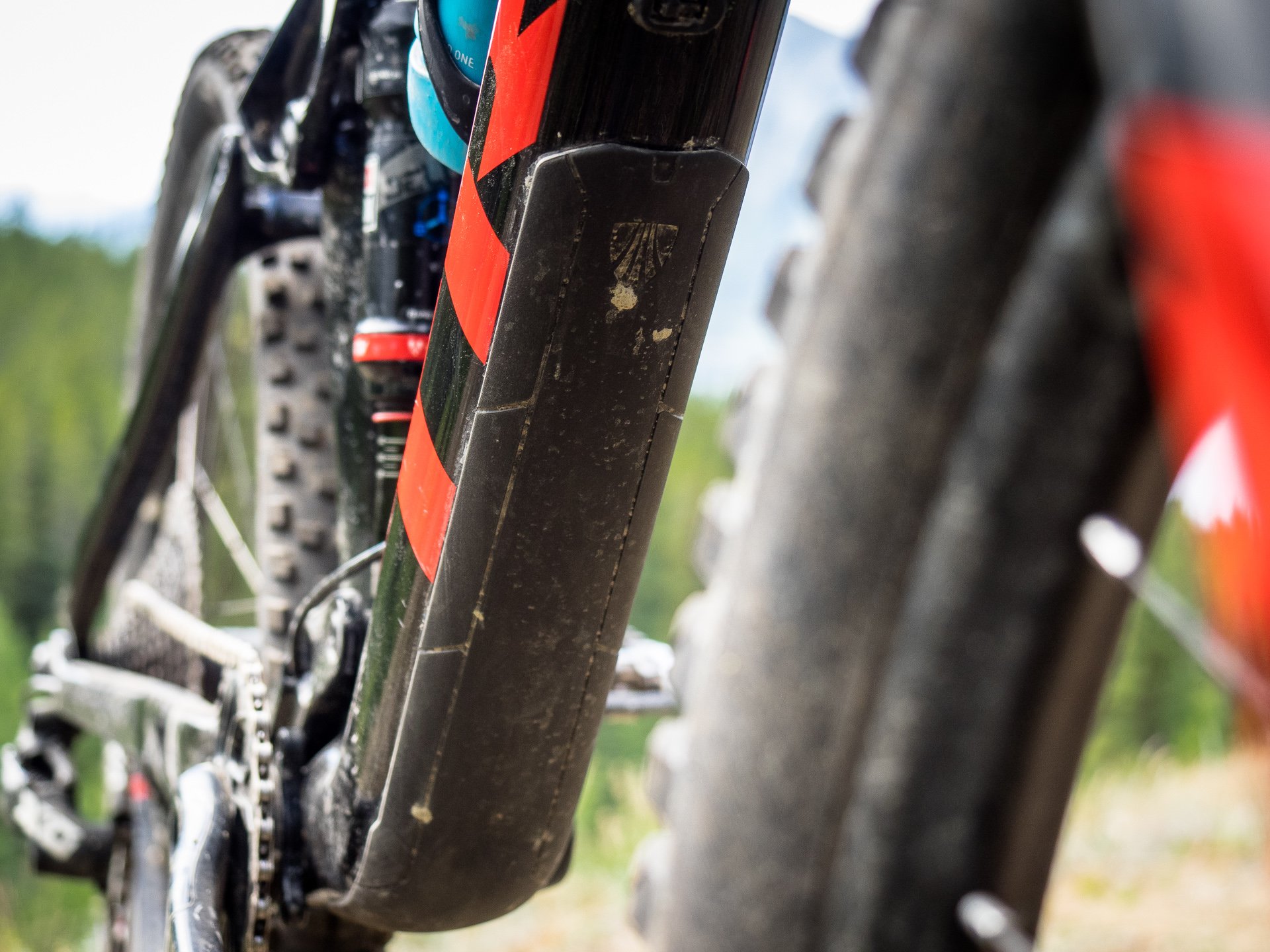
It's refreshing to see a properly-sized downtube protector. Especially when you consider the value of that frame.
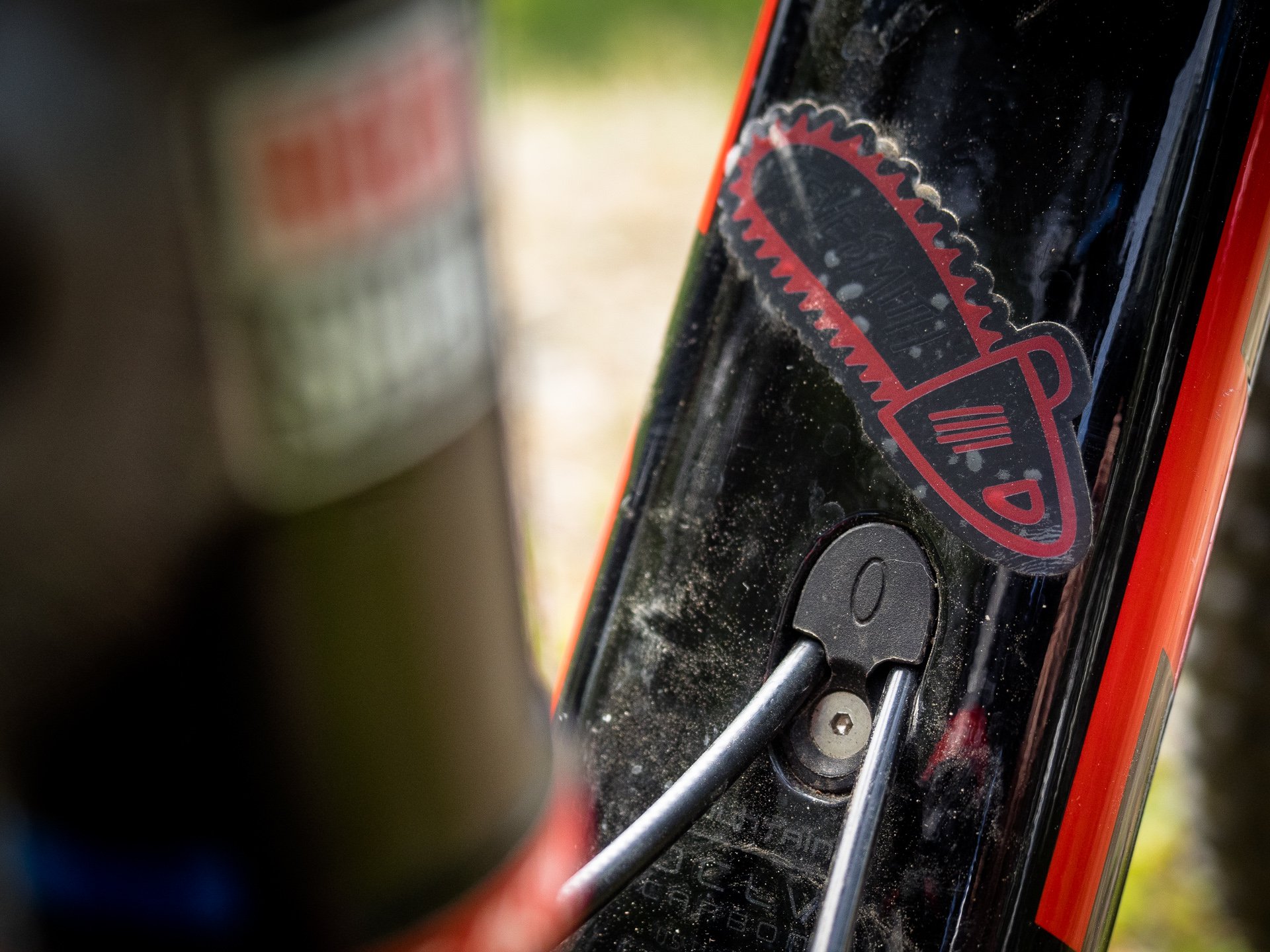
Internal cable routing and management is spot on.
Trail Manners
I've put some emphasis on the stiffness of the Remedy, but it should be clear that that trait shows itself when it's most noticeable - like when holding a line through rough corners or at the bottom of something that wants to shake you off your bike - but the overall sensation of the front end of the bike is not stiff or harsh. It is, in fact, well damped. Flat out stiffness is achievable by anyone. You may sacrifice feel or weight to get there, but it's not hard to do. The art lies in the blend and layup of fibers to give the stiffness needed for high performance riding without rattling you like an angry snake or adding unnecessary weight. The size 19.5 Remedy weighs in at 13.2 kg / 29.1 lbs without pedals.
Climbing. If you were really hammering a fire road, you could flick the shock into lockout mode and drop the fork down to 130mm. I would occasionally lock out the shock - usually for paved climbing - but I never used the travel adjust on the fork. The front end doesn't feel high at full travel so it never felt necessary. In pedal mode, the rear end still has plenty of traction and scoots along a bit more efficiently, but leaving the shock open is not a big detriment to climbing efficiency, especially in technical terrain. Pedal kickback was not noticeable, and even in Lo mode on the Mino Link, pedal strikes were never a concern. The Remedy is a great climber for a 150mm bike with a 160mm fork. The wheels respond nicely to a bit of stick and are capable helpers to a rider wanting to get up and over tricky climbing sections requiring precise line choice, power delivery, and weight shifts.
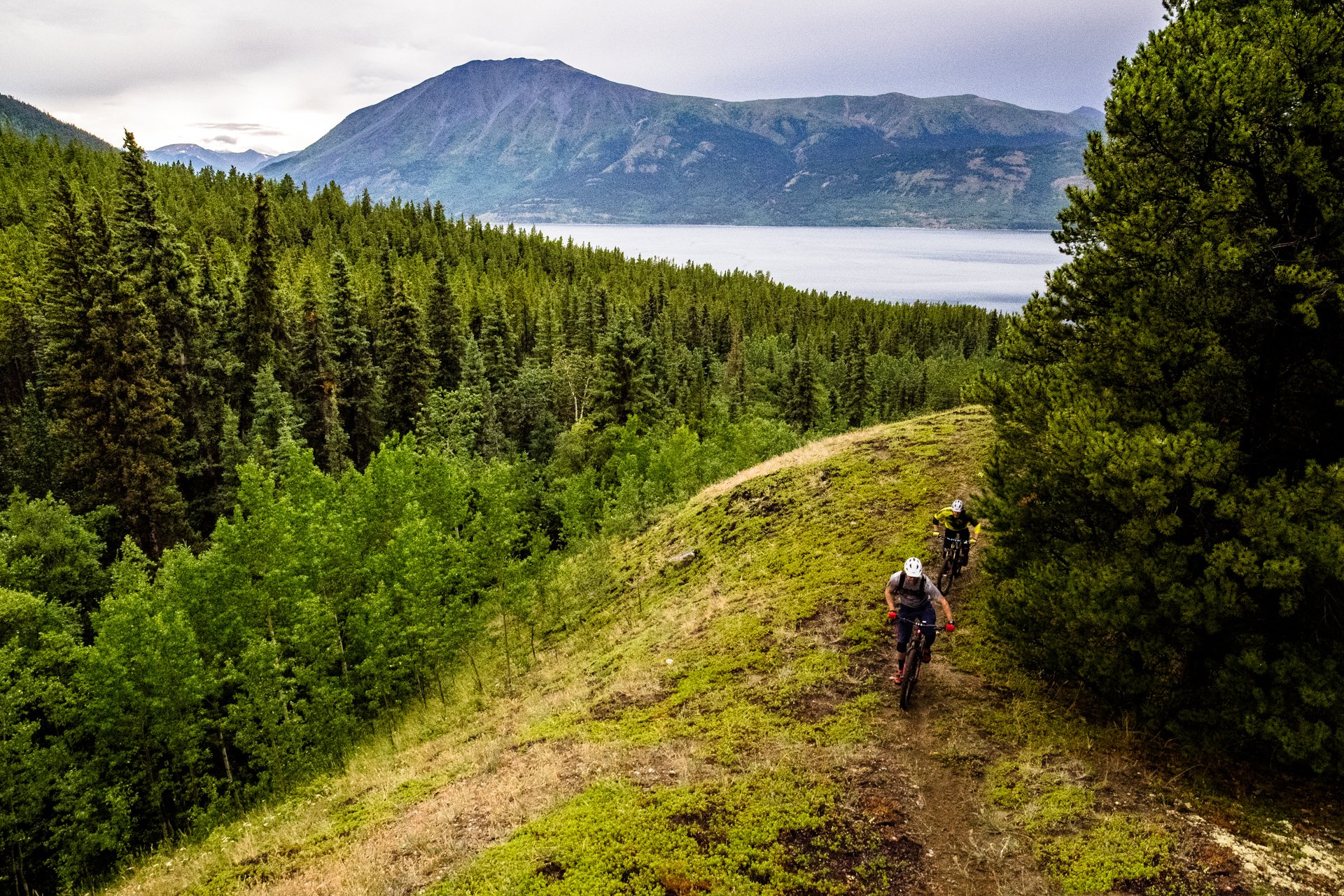
The Remedy climbs steeps eagerly thanks to well-balanced geometry, a suspension configuration that behaves, and Eagle. Glorious Eagle.
Descending. If my first impression of the Remedy wasn't like the first sip of an ice cold beer on a dusty, hot day, it's only because I had high expectations. That doesn't mean it wasn't terrific, but it might have been so capable and comfortable so quickly that I didn't notice just how much I liked it. Once I did get it home to the Shore and started riding it down lines I was very familiar with, I was struck by how easy to control it was in the steeps. In some cases, it instilled more confidence than the Nomad, with which I have become very familiar and ridden down a lot of very scary lines. It's hard to pin down why that is, but it put to rest any doubts I had about whether Trek may have erred in discontinuing a 29" Remedy (for one thing, because there's a Slash for that). Tight lines requiring precision or ones where bullish horn-pulling were called for were both situations in which the Remedy was easy to manage. It calls for a neutral or slightly rearward position for me, so you can let the back end do its thing and save a bit of the Lyrik's mid stroke to skip off of high-frequency bumps or the odd bomb hole. A slight front of center bias was not punished, but as soon as I scooted back, the bike would squirt forward and the active back end would start to track or pop, depending on what I wanted. It is a bike that will bend to your will and for that reason, I can recommend it as a playful and capable choice for riders of all skill levels.
Other impressions. The Remedy is playful when called upon, but also perfectly happy to sit back and chill if that's your vibe for the day. You don't need to get it up to high speed in order to realize its performance potential, but it is lively and snappy when driven hard. The stiffness lets you push it into a corner and snap out of it, but doesn't punish you on long rides.
After 9 or 10 months of use, the bike still runs as quiet as day one. It has undergone one fairly standard service (fork, shock, bearings, cables and brakes), but otherwise has required no attention with the exception of the seatpost cartridge which is about to die for the second time (as noted above). Shifting is perfect and crisp. The SRAM Guide Ultimates are sharp (with new pads and a bleed) and the 180mm rotors front and back have been sufficient (although I would go to a 200 up front if I lived in Whistler or raced it on long stages). The pressfit BB hasn't uttered a peep (this doesn't mean that won't happen). The paint has a few small chips but there is no evident cable rub.
If it were a dog, it would be the one you let sleep with you on the bed.
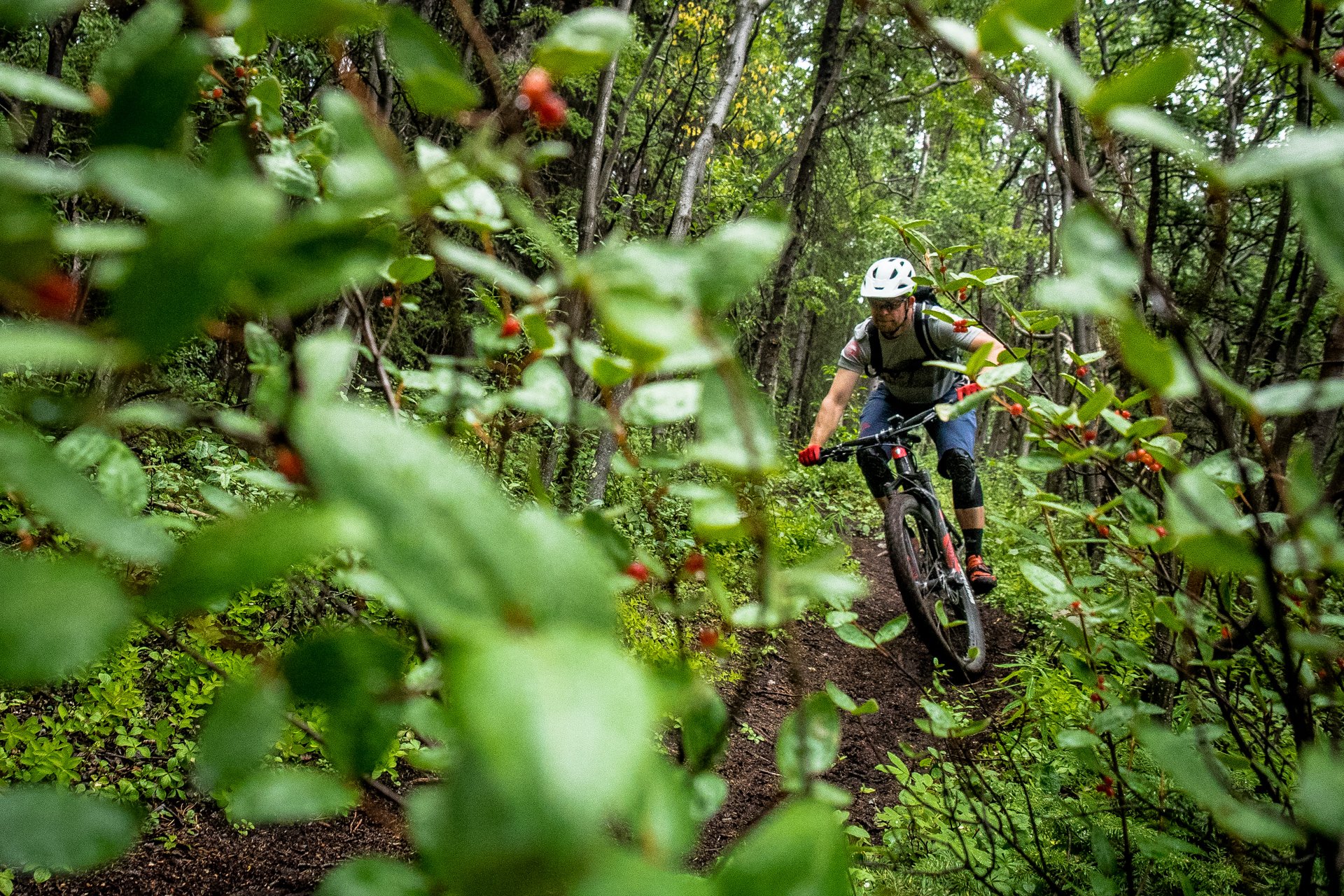
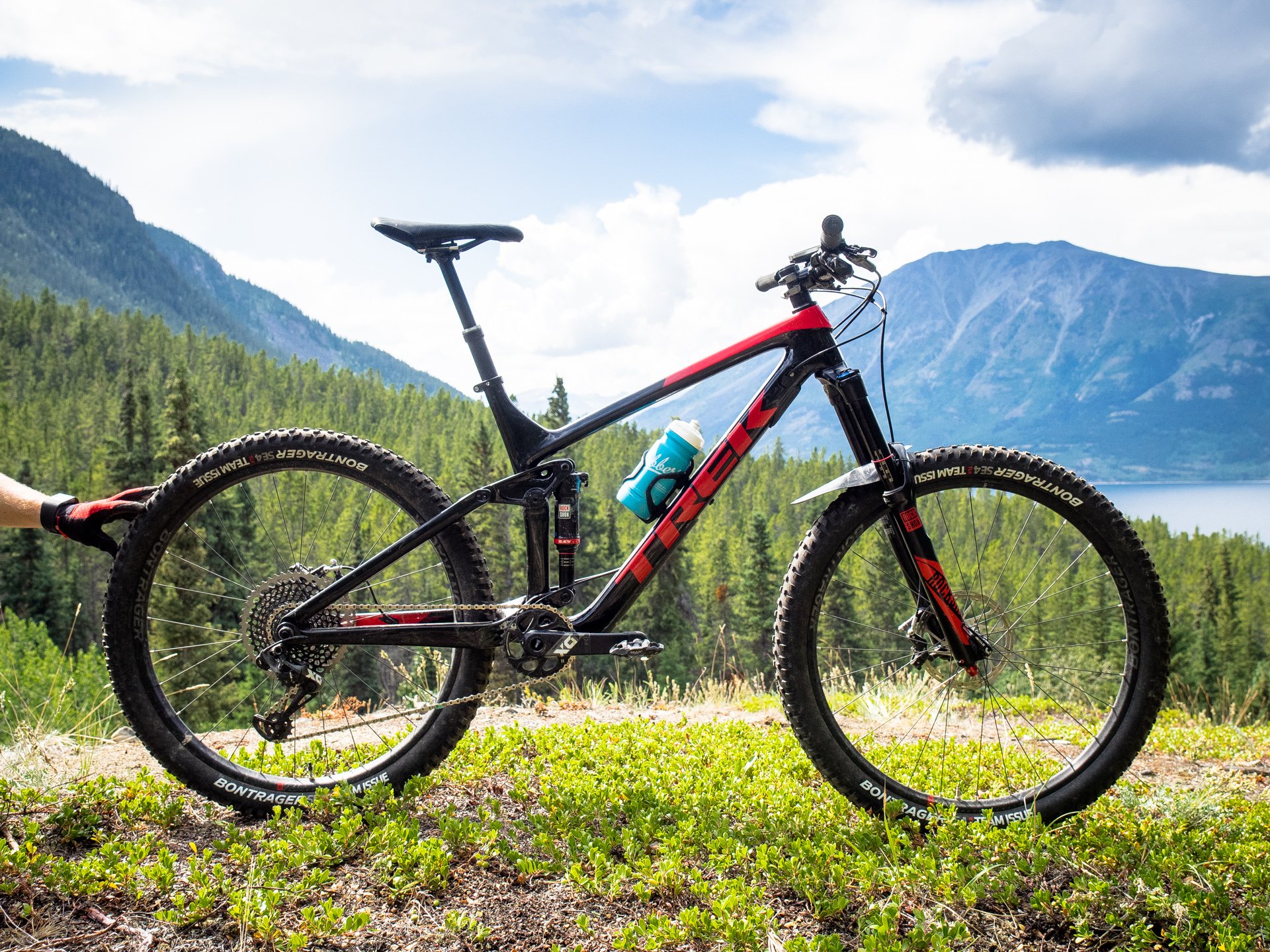
Gimme!
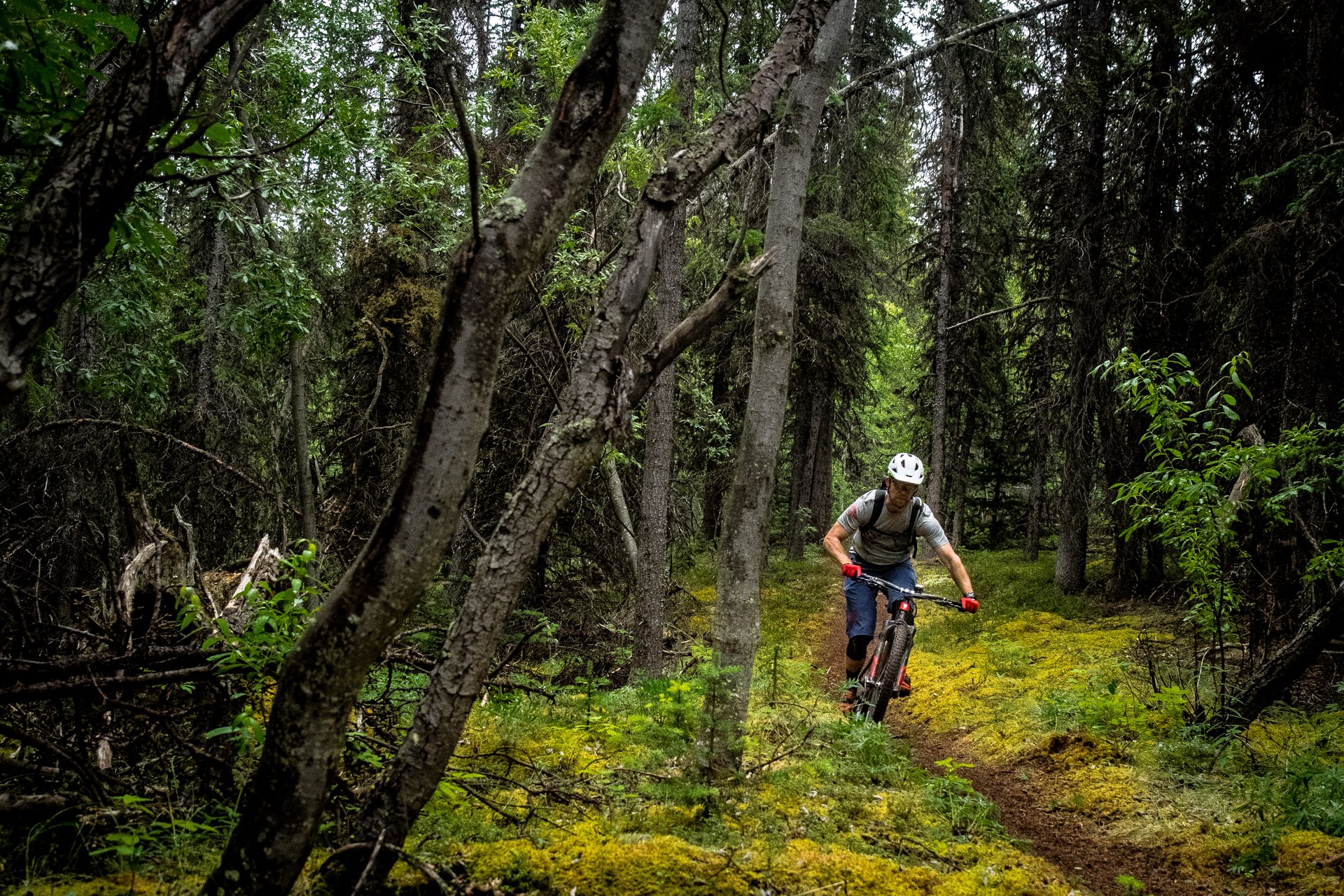
You don't need a bike as rowdy as the Remedy to enjoy flat-ish loamers like this one, but it is not a sluggish bike, so it never felt like too much even if it was.
Final Thoughts.
It took me a while to work through the answer to the question "who should buy a Remedy 9.9 RSL?" If you're 29er curious, there is the Fuel EX or the Slash. 27.5 stalwarts who want to do a bit of everything will find that the Remedy ticks most boxes. You can ride it all day, capably. It is certainly race-ready. But it should be at that price. And that's my main concern. It's so much bike, but it's also so much money. If the price stays the same, you add a 150mm dropper post that doesn't fail, and some of Bontrager's new carbon wheels (provided they perform as we think they will), we can have a chat about value. As it is, I think the retail price on the 9.9 RSL is a tad high. The frame is rammed with technology and performance, but that means you could opt for the 9.8 and save yourself three and a half grand (Canadian) while still getting the same incredible frame. Sure, you trade Eagle for XT, and the 160mm Lyrik for a 150mm Pike, but for that much of a discount, it's probably worth considering. Trek offers a lifetime warranty on the main frame and 5 years on the swingarm, which is an admirable amount of backing for a bike that will get ridden hard, shuttled, and probably ridden in bike parks.
If you can cover the budget, the 9.9 RSL is a superb choice in a slowly narrowing field of truly capable 150mm travel 27.5-inch wheeled bikes that I feel hit the heart of the do-it-all well spectrum.
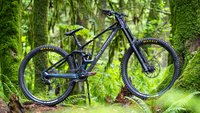

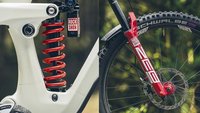
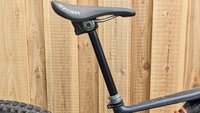
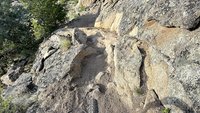
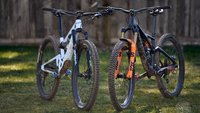

Comments
Tehllama42
7 years, 1 month ago
Once again, it sounds like the biggest obstacle to selling a 9.9 RSL Trek is how good a job they did speccing the 9.8. It's almost a perennial thing, although it's mostly about how good the 9.8 is... Especially when compared to the frameset cost.
For the money, I'd take the 9.8 with an e13 cassette, fettled Pike (Luftkappe and custom valving), 150mm s transfer + WolfTooth remote, and Line 30 carbon wheels too.
Reply
Geof Harries
7 years, 1 month ago
Can we talk about the beautiful Yukon scenery? I'm biased (as I live here) but, c'mon those photos are awesome.
Reply
Pete Roggeman
7 years, 1 month ago
Dave got some beauties up there. More of those from our trip up there last year coming soon!
Reply
Pete Roggeman
7 years, 1 month ago
Hard to argue with that sentiment. This was the first year Eagle was available, and if you want to be bleeding edge, there's always a cost to it.
Reply
Dan
7 years, 1 month ago
Great assessment. The 9.8 spec seems to be the way to go - crazy that the fork and drivetrain warrant such a massive upcharge.
As an owner of last year's 9.8 29 I too am puzzled by the lack of this wheel option. Sure sure I get slagged on for still running a 2X but I think this platform is dialed with big hoops. Running Minions and a 160mm 36 and the bike has carried me through the best of everything I know in Western Washington and Squamish in the past year.
Reply
Pete Roggeman
7 years, 1 month ago
Sounds like you're running a full-fledged Shremedy. We love that bike. Don't let anybody talk shit about your front derailleur. It might be the last one you own on an MTB, might as well enjoy it while it lasts.
Reply
Please log in to leave a comment.